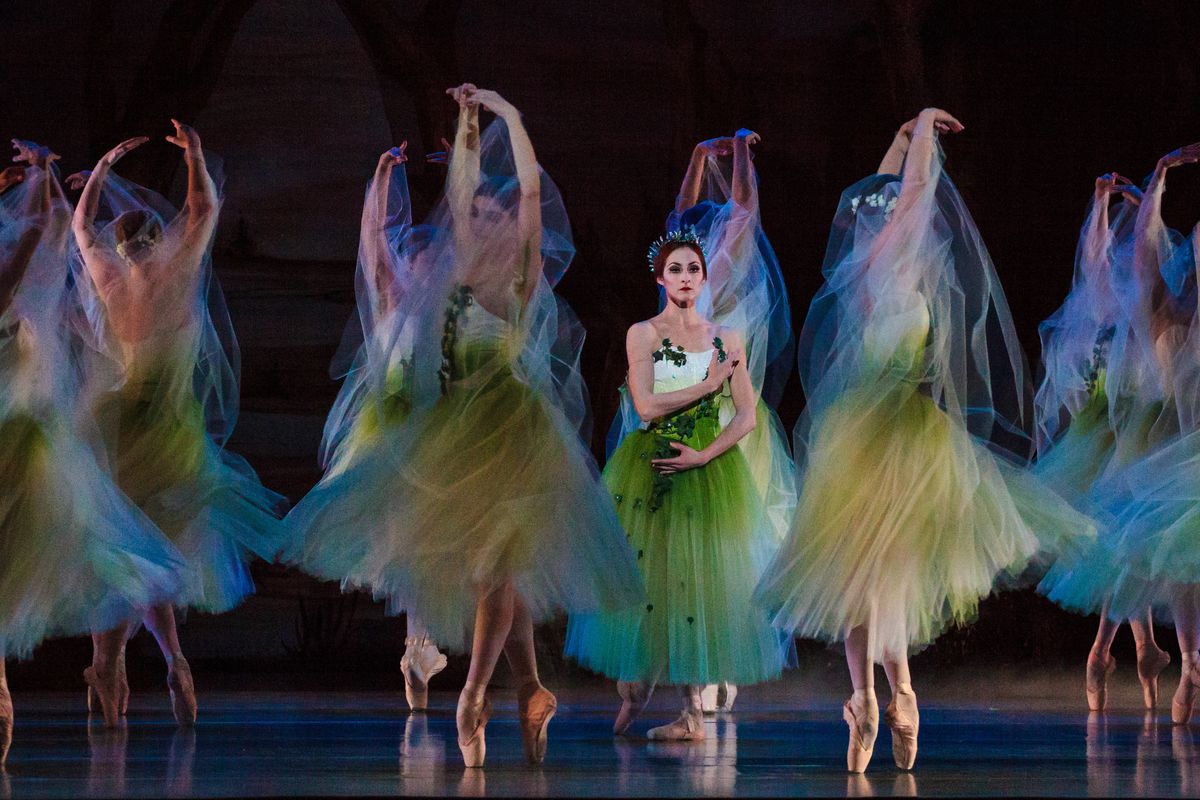Queen of the Night: Ballet West's Christiana Bennett on the Mysterious Myrtha
This story originally appeared in the April/May 2015 issue of Pointe.
She’s Giselle‘s anti-heroine: Myrtha, the cold-hearted spirit queen who leads the Wilis in nightly crusades against mortal men. With three back-to-back variations that involve a mix of supple pointework, adagio and grand allégro, the role can be technically and artistically exhausting. “Myrtha is probably one of the hardest things, besides Aurora, that I’ve ever done,” says Ballet West principal Christiana Bennett, who performed the role in November. “And you have to stay so stoic.” Below are her tips for mastering ballet’s iciest queen.
1. Remember Your Motivation
Myrtha is a product of her painful past. Bennett recalls BW artistic director Adam Sklute’s advice when considering her characterization: “He said, ‘Remember, you’re the first woman to die of a broken heart. You’ve been hunting down men for hundreds of years, so there’s a comfort level with your actions.’ ” And as queen, Myrtha seethes with authority. “I try to make it seem like I’m orchestrating everything. When the Wilis stand up, I anticipate that and call them up from the ground.”
2. Radiate Power From the Inside Out
Myrtha’s power lies in her icy stoicism, which Bennett says stems from a quiet, internal strength. “I think of having a tightness in my stomach, and letting it course through the rest of my body.” As for facial expression, subtlety works better than sneers. “I keep all the intensity in my eyes, and every once in a while I raise an eyebrow,” she says. Try to keep the face free of tension, as well. “It’s hard not to clench your jaw, but I try to keep everything from my eyelids down very calm.”
3. Feel the Wind at Your Back
Myrtha’s bourrées across the stage should have a ghostlike quality, as if she’s skimming the ground. To stay level, Bennett moves her feet as quickly as possible, yet gently and quietly so that her body doesn’t jerk in response. “It’s almost like a whooshing feeling—like when your windows open and your curtains get sucked out, then blow back into the room,” she says. “I imagine that the wind is pushing me.”
4. Slow and Steady
During Myrtha’s slow promenade in arabesque, finishing in penchée, any hop or bobble is glaringly obvious. For more stability, Bennett thinks of sliding all of her weight onto her standing foot. “Again, it’s that whoosh effect,” she says. “It forces you to find your balance, instead of peg-legging into the ground.” Keep the first arabesque arms classically square and below the shoulders, “as if they’re a rudder of a ship.” During the penchée, looking out beyond your fingertips, as opposed to directly down, will give you more security.
5. Stay in Control of the Role
After the Wilis’ arabesque chugs, Myrtha charges out of the wings with grands jetés, finishing with a climactic manège. But don’t lose the characterization or throw the port de bras away. “The music is so gorgeous that I just want to come out beaming! But you have to keep it all inside. I really try to focus on proper classical arm placement and not go to extremes.”





